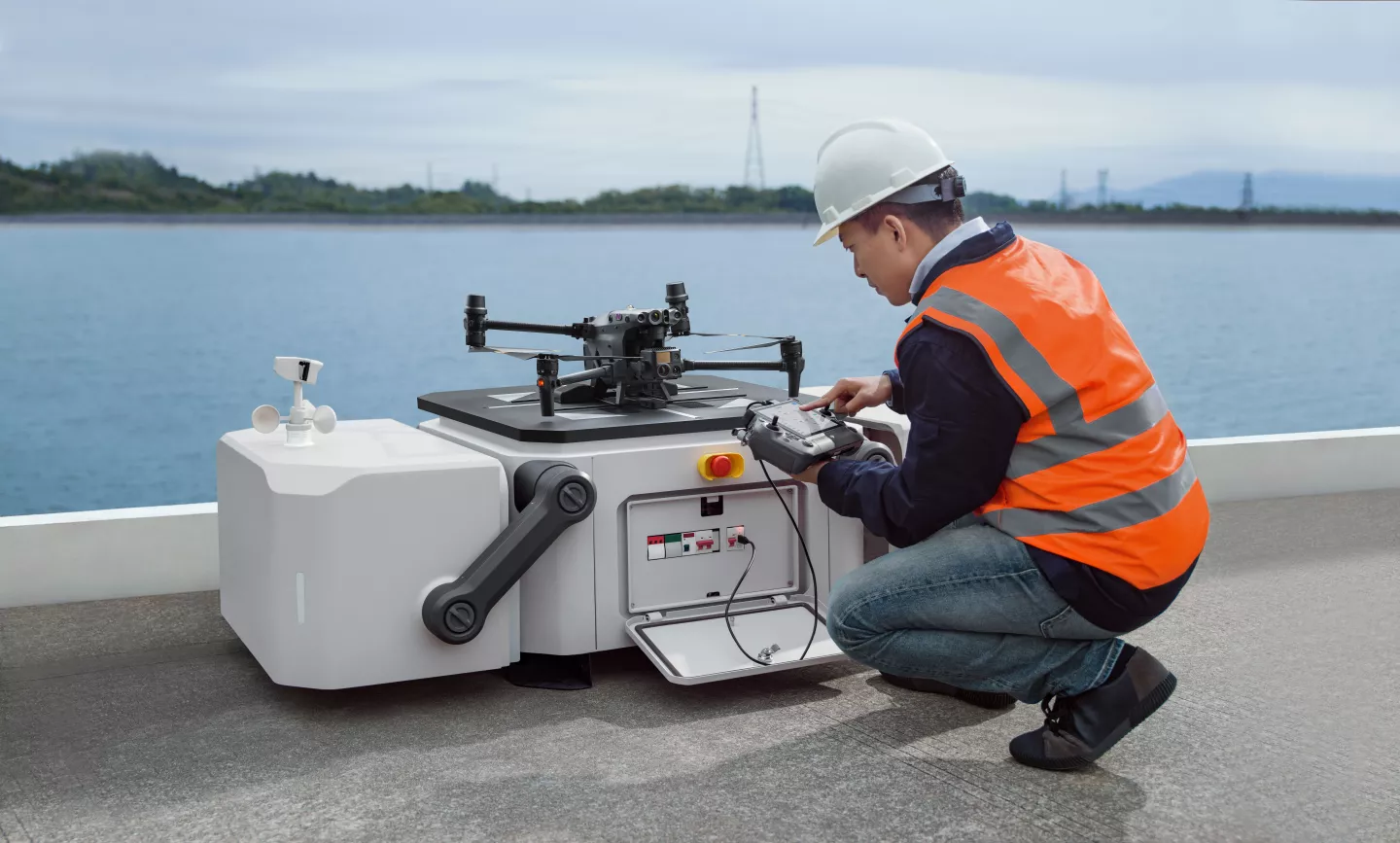DJI's range of enterprise drones has a new flagship in the shape of the Matrice 30, which is designed to fly in driving rain, high winds and even snow. It's ready for remote operation beyond line of sight, and can be had with an autonomous docking station.
The Matrice 30 (M30) can be folded down to backpack-friendly proportions (365 x 215 x 195 mm/14.3 x 8.4 x 7.6 in) at the push of a button, and weighs in at 3.77 kg (8.3 lb), including two self-heating Li-Po battery packs at 5,880 mAh each.
Once it's in the air it has a top horizontal speed of 23 m/s (75.5 ft/s), can get up to 7,000 m (~23,000 ft) above sea level when optioned with high altitude props and manages a per-charge flight time of 41 minutes.
The drone comes with IP55 protection from ingress, which is reported to allow for deployment in a range of harsh conditions – including at high altitudes, through snow and rain and high winds – and has an operating temperature range of -20 °C to 50 °C (-4 °F - 122 °F).

There are numerous built-in redundancies and backup systems, including support for LTE transmission as well as Wi-Fi 6 to ensure continued connection to the operator even over complex terrain or challenging conditions, and it can safely perform an emergency landing on three props. And a suite of obstacle avoidance sensors are able to "see" up to 38 m (124.6 ft) in front and 33 m (108 ft) up, down, side and back.
The gimbaled camera array is made up of a 48-MP F2.8 module with a 1/2-inch CMOS sensor and 16x optical zoom (plus 200x digital zoom) and a 12-MP wide-angle camera, making for 8K photos and 4K video at 30 frames per second. A Full HD FPV camera is onboard too, with a frame rate of 30 fps and a 161-degree field of view. A M30T model variant adds a 640 x 512-pixel radiometric thermal camera to the drone's toolbox as well.
With the new drone comes a new IP54-certified RC Plus controller that can be used in heavy rain, with a 7-inch 1,920 x 1,200-resolution touchscreen display sporting controls on either side, along with six physical buttons for such things as switching between camera modes without the pilot's hands leaving the sticks. The remote controller also sports both an internal battery and a swappable external battery for around six hours of use.

Meanwhile, compatibility with the company's FlightHub 2 fleet management cloud-based software and an autonomous docking station called the DJI Dock caters for unattended deployment by remote operators.
Living completely on the cloud, the FlightHub 2 software not only allows remote mission management and operation from a pilot's RC unit, but also from any device with a web browser. The system supports maps, and allows for real-time annotations – which means a pilot can take advantage of the onboard laser rangefinder to pinpoint coordinates of objects (such as damaged infrastructure) or the location of a person during search and rescue operations up to 1,200 m (almost 4,000 ft) away from the drone, and this information can be relayed live to a team on the ground.
The 90-kg (198-lb) DJI Dock autonomous takeoff, landing and charging station has a footprint of under one square meter (10 ft2) and makes automated missions possible. It's rated at IP55 (with the core components coming with IP67 protection for all-weather use), features a climate-controlled interior and benefits from built-in antennas, a weather station and ultra-wide surveillance cameras. Fast-charging chops can top up a docked drone's batteries in 25 minutes when connected to mains power, but the Dock also has its own battery to keep it operational in the event of an outage.

The Matrice 30 on its own has a guide price of US$9,999, while the M30T package comes in at $13,999. Operators looking at remote deployment will be looking at around $30k for the DJI Dock and M30 together, or $34k for the Dock and M30T. Buyers are advised to check with local dealers. The video below has more.
Product page: DJI M30









